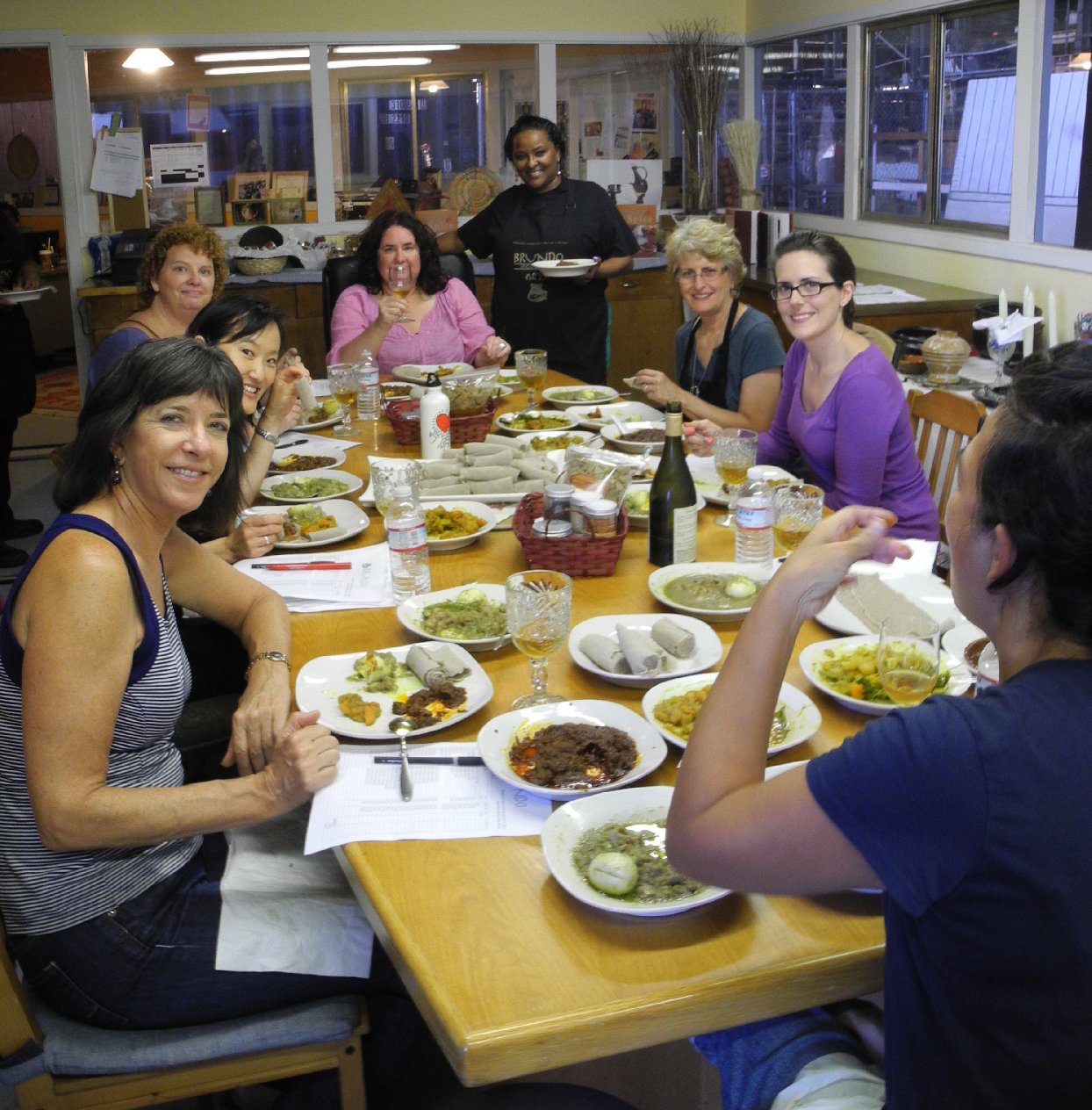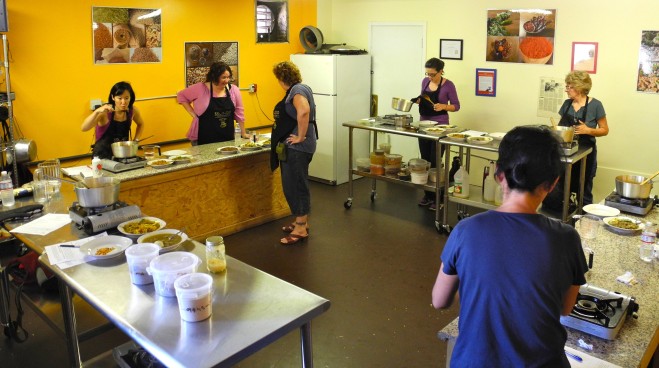
Post by Kelly Baker, Oakland Local (9/16/13)
Tucked away in the corner of Bay 8 of the mammoth American Steel warehouse sits the Ethiopian spice shop, Brundo. Barely visible from the street, the empty back of a papasan chair adorned with a Brundo apron marks the entrance for customers. But the intoxicating smells of onions, allspice, and simmering meat are a much more potent identifier for this hidden West Oakland gem.
Brundo is a project of the well-known North Oakland Ethiopian eatery, Cafe Colucci. Founder Fetlework Teferi grew her successful restaurant into an adjoining spice shop when local wholesale spice vendors proved inconsistent. Using the connections in her close-knit community, Fetlework partnered with farmers in Ethiopia to produce spices expressly for the restaurant, “so that we ourselves can watch the integrity of what we are using in our food,” Lea Berhane, Brundo’s Director of Marketing and Business Development, explains. “It is true farm-to-table.”
When her ambitions outgrew her Telegraph locale, Fetlework moved Brundo’s headquarters to American Steel Studios. She has authored a self-published spice book, opened an online spice store, and is in the process of getting Fair Trade and organic certifications for the source farm in Ethiopia, which employs 31 people. Brundo has been offering Ethiopian cooking classes out of the West Oakland location for over 3 years now.
Twice a week, Brundo offers cooking classes, both vegan and traditional options, with a sit-down meal to follow. For 3 hours, I learned about the basic spices, ingredients, and cooking techniques to create Atakilt, Doro Alicha, and Sega Wot dishes–not a bad way to start a Saturday.
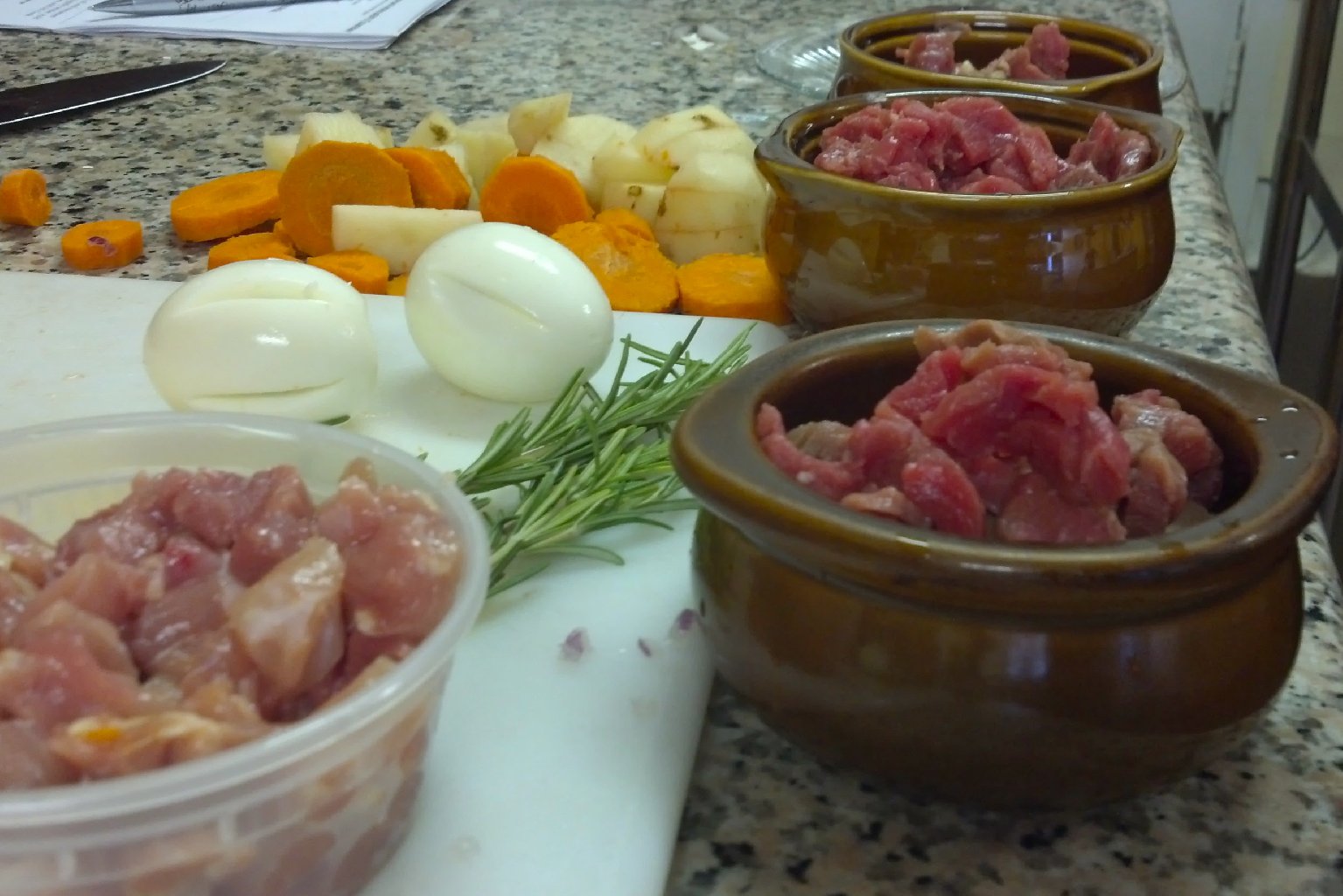
Led by Adey Abeba, we began with all of our prep work: chopping cabbage, potatoes, and carrots. The most arduous task was finely mincing red onions through our tears. Eventually we just threw our onion bits in the food processor. Adey explained that it’s important to cut the onions so finely because the water from the fine particles allows cooks to brown the onions without oil.
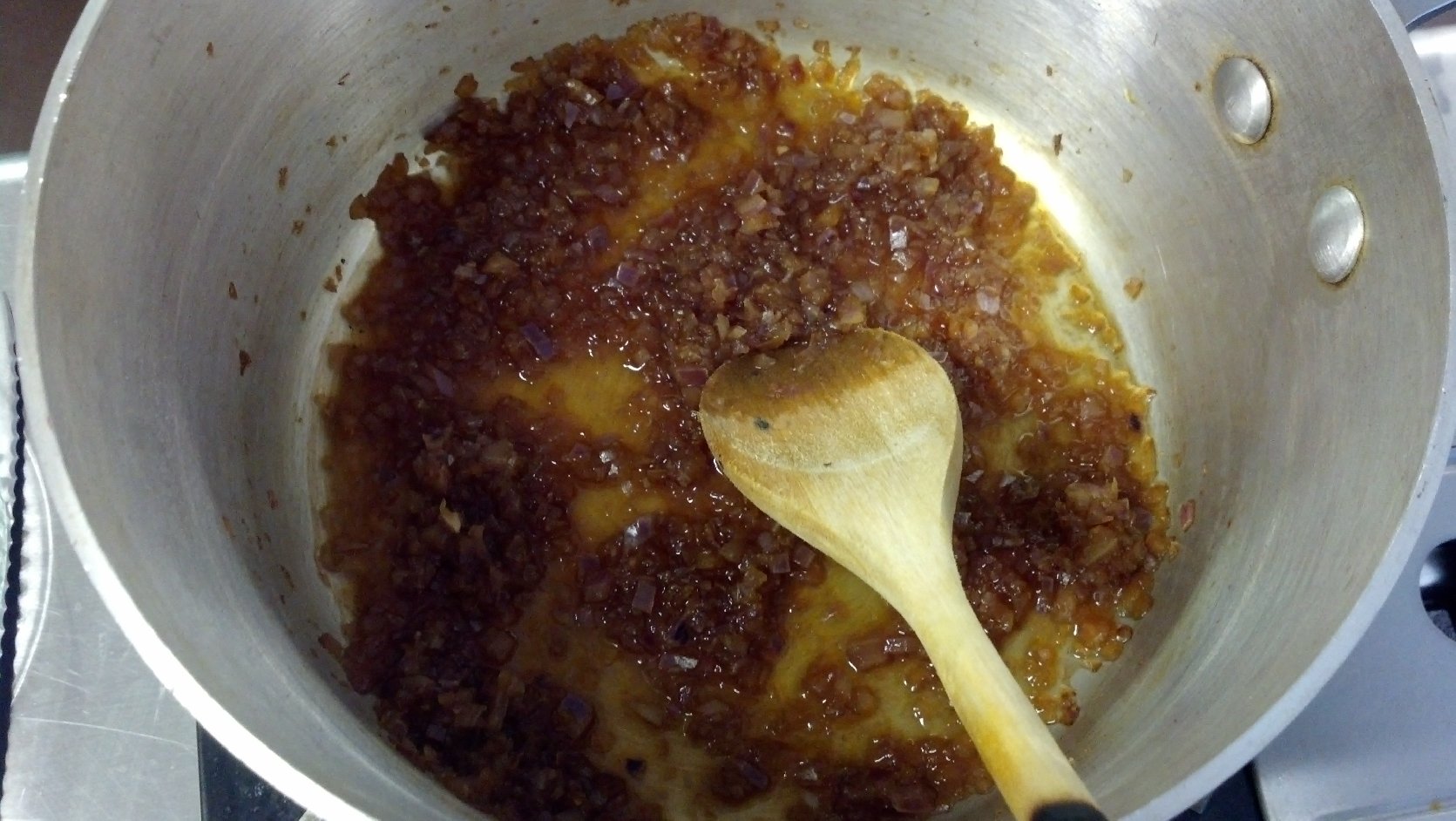
Once we chopped up some chicken and beef, we heated up our pans and threw the onions in. Mine quickly browned and started to leave a brown residue on the pot. Using some water, I deglazed the pot and the purple onions were now a bubbly brown goop. We continued to add water and veggies to make the Atakilt dish.
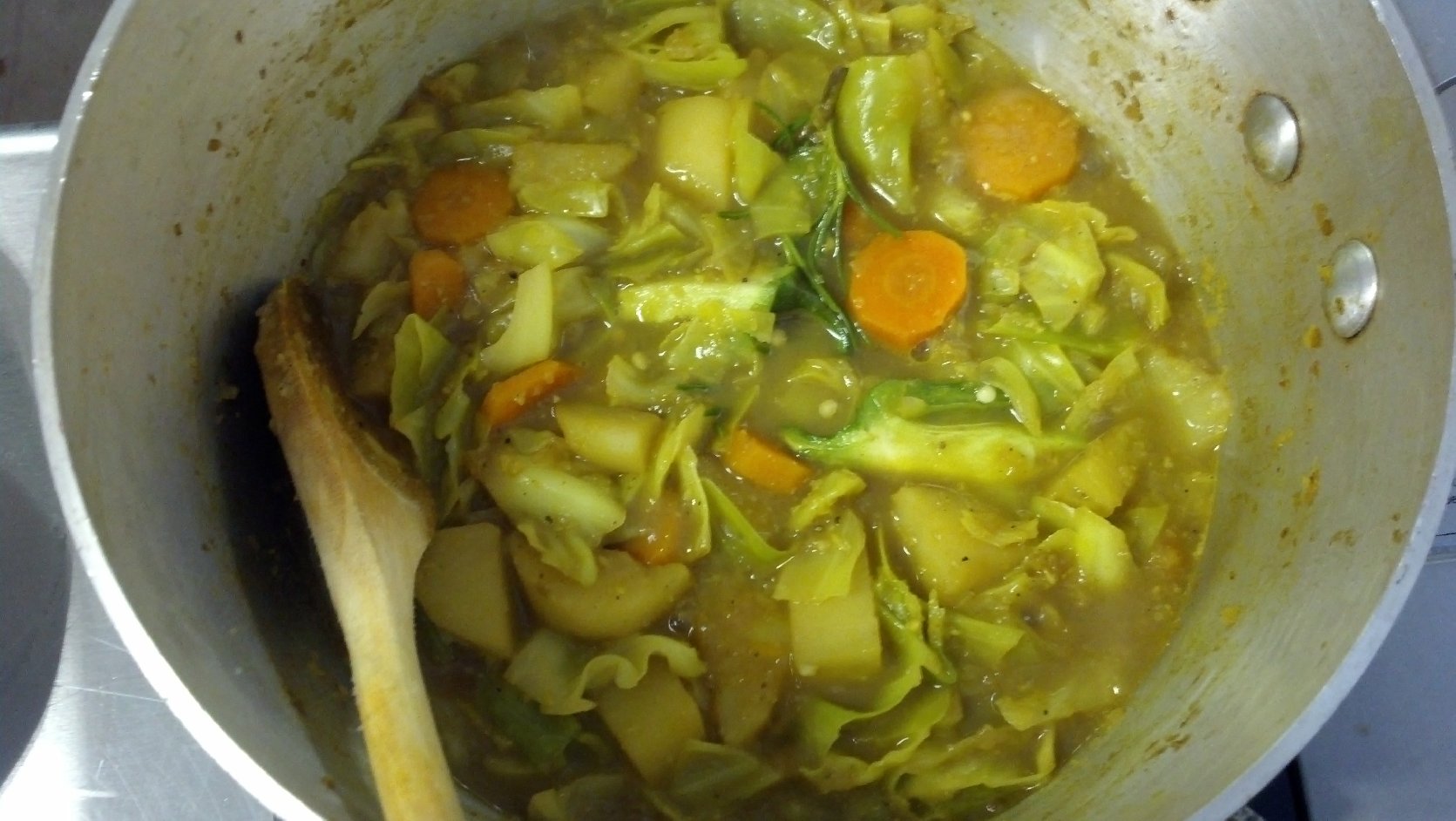
“There is no wrong way to make these dishes!” Adey reminded us throughout the cooking process. She swore to us that each of our dishes would look and taste drastically different, despite the fact that we were all using the exact same ingredients in more or less the same quantities. We wandered around the room with our spoons to sample each others’ dishes, encouraged and amazed by the stark contrasts between each effort: “This one is so brown!” “Oooh you can definitely taste the cabbage in that one.” “Wow that yellow color is beautiful.”
